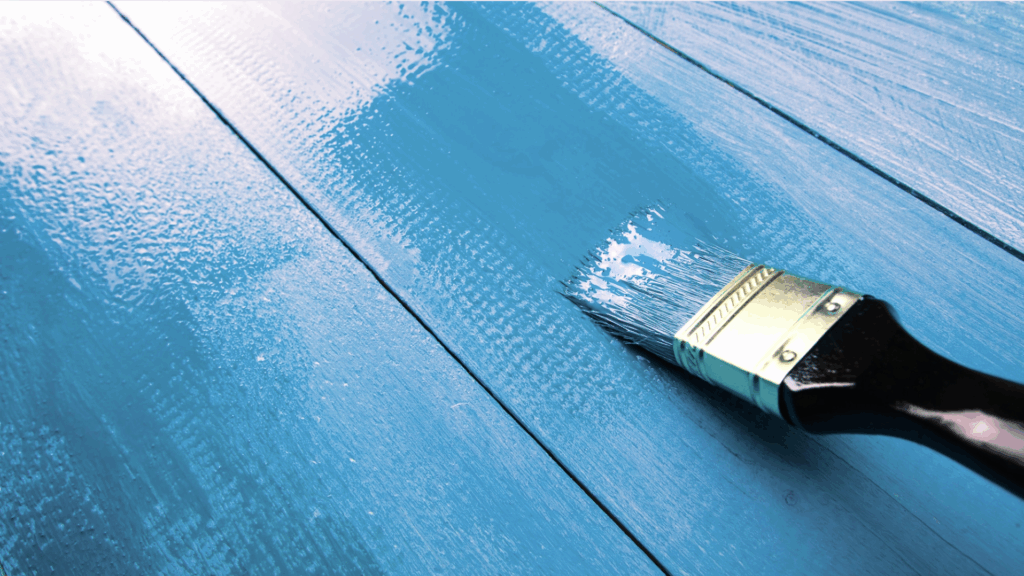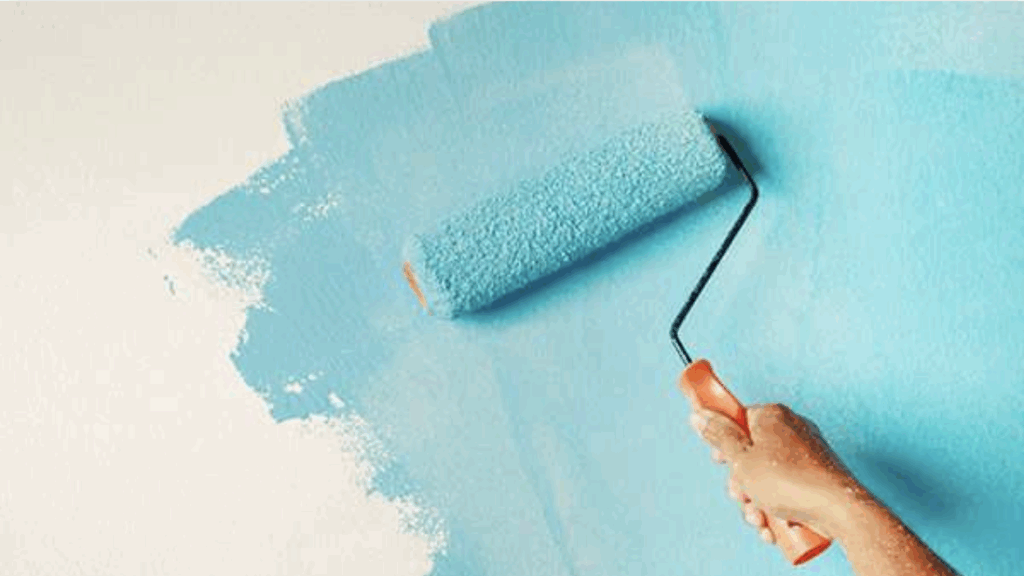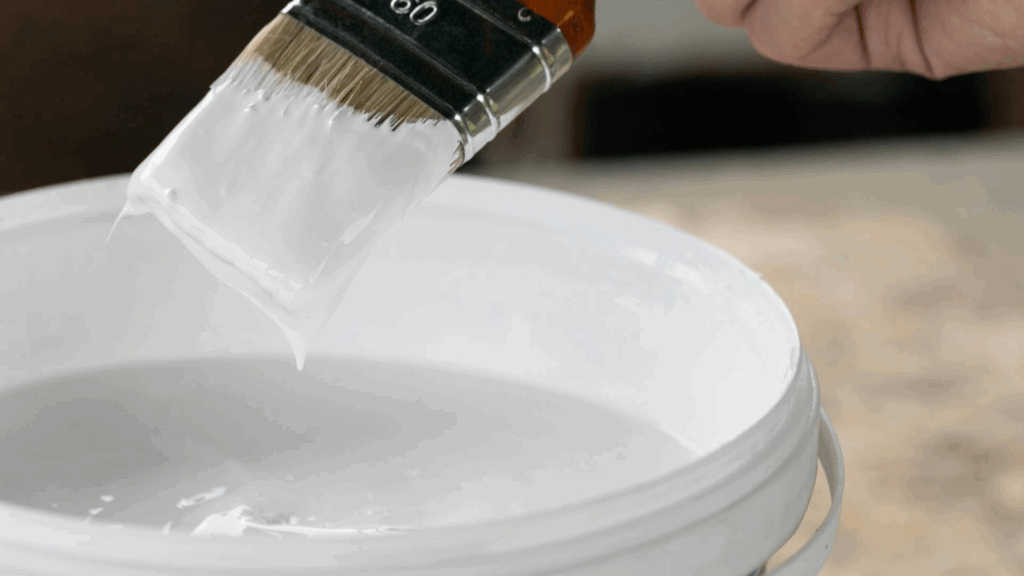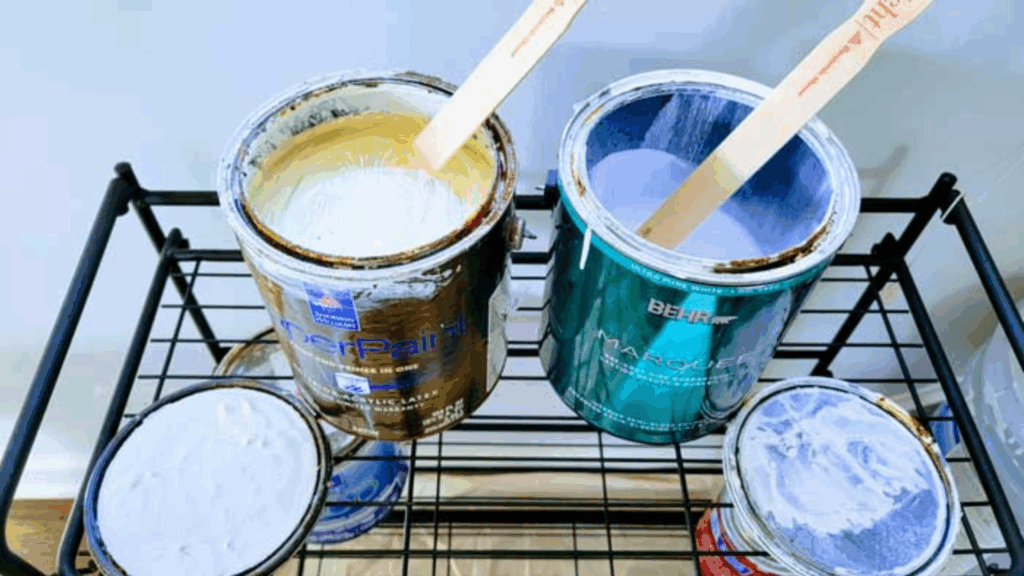When you’re working on a painting project, knowing how long your paint will last is more important than you might think.
It can save you time, money, and a whole lot of frustration.
With the right care and storage, you can extend the life of your paint, making sure it’s ready to go when you are.
After all, no one wants to open a can of paint, only to find it’s gone bad.
In this blog, I’ll walk you through how long paint typically lasts and how you can tell if it’s expired.
Understanding this will help you make the most of your supplies and avoid wasting time on a project that doesn’t turn out the way you imagined.
Let’s get started on making sure your paint is as good as new!
Factors that Affect Paint Lifespan
Several factors can influence how long paint lasts and how it performs over time.
- Type of Paint: Oil-based paints generally last longer than water-based (latex) paints, often up to 15 years, while latex paints may last 5-10 years, depending on the conditions.
- Storage Conditions: Paint stored in a cool, dry environment will last longer than paint exposed to extreme temperatures or humidity. Temperature fluctuations can cause the paint to separate or dry out.
- Frequency of Use: Paint that is frequently used and opened may not last as long as sealed, unused paint. The more air exposure it has, the quicker it can degrade.
- Application and Surface: Proper application techniques and painting on suitable surfaces can also affect how long the paint lasts. Outdoor paints, especially those exposed to the elements, will generally need to be replaced sooner than indoor paints.
How Long Does Paint Last?
Understanding how long different types of paint last can help you choose the right one for your project and ensure it stays looking great for years.
1. Oil-Based Paint

Lifespan:
- Unopened: 5 to 7 years
- Opened: 2 to 3 years if sealed and stored well
Best For: Trim, doors, baseboards, and outdoor surfaces
Why It Lasts: Oil-based paint creates a strong, glossy finish that resists wear. It’s durable in high-traffic or exposed areas but takes longer to dry and can yellow over time. Store in a cool, dry spot with the lid tightly sealed
2. Water-Based (Latex) Paint

Lifespan:
- Unopened: 5 to 10 years
- Opened: 2 to 3 years with proper storage
Best For: Interior walls, ceilings, and low-moisture rooms
Why It Lasts: Latex paint is easy to apply and dries fast. It’s low in VOCs, easy to clean up with soap and water, and holds color well. Humid areas may reduce its lifespan unless you choose a mildew-resistant version
3. Acrylic Latex Paint

Lifespan:
- Unopened: 7 to 10 years
- Opened: 2 to 4 years if stored correctly
Best For: Exterior siding, interior walls, and high-use surfaces
Why It Lasts: This blend combines the best of both acrylic and latex. It adheres well to most surfaces and is more flexible, making it perfect for exterior use where expansion and contraction occur. Keep tightly sealed to avoid drying out.
Comparing Different Types of Paint
Understanding the differences between different paints helps you choose the right type for your project, ensuring the best results.
| Paint Type | Best Uses | Pros | Cons |
|---|---|---|---|
| Water-Based (Latex) | Walls, ceilings, and most interior spaces | Quick drying, easy cleanup, low odor, flexible and crack-resistant | May wear faster in humid areas, not as tough as oil-based |
| Oil-Based | Trim, doors, cabinets, and exterior wood | Very durable, smooth glossy finish, excellent adhesion | Long drying time, strong fumes, hard to clean, can yellow over time |
| Acrylic | Interior walls, exterior siding, trim, decorative work | Long-lasting, UV-resistant, flexible (won’t crack), better for exteriors | Slightly more expensive than standard latex |
Factors that Affect Paint Lifespan
Several factors can impact how long paint lasts, from the type of paint to how it’s stored and applied. These are the main factors that can affect how long your paint lasts.
1. Storage Conditions: Temperature, Humidity, and Sealing
How you store your paint plays a big role in how long it lasts. Paint should be stored in a cool, dry place, away from extreme temperatures and humidity.
Too much heat or cold can cause the paint to thicken or separate, making it harder to use.
Additionally, ensuring the paint can is sealed tightly will prevent air from getting in and drying it out.
2. Frequency of Use and Exposure to Elements
Paint that’s used frequently or exposed to harsh weather conditions will wear out faster.
For example, paint on exterior surfaces that face constant sunlight, rain, or snow may fade or peel more quickly than paint in a dry, shaded indoor space.
High-traffic areas like hallways or kitchens may also experience more wear and tear, causing the paint to age faster.
3. Type of Surface Painted and Environment (Indoor vs. Outdoor)
The type of surface you’re painting and the environment it’s in can impact the longevity of the paint.
Porous surfaces like wood absorb more paint and may need reapplication sooner than smoother surfaces like metal.
Indoor paint typically lasts longer than outdoor paint, as it’s protected from weather elements. Outdoor paint needs to be more durable to withstand temperature changes, moisture, and UV rays, so it may have a shorter lifespan.
Signs Your Paint May Have Expired

Knowing how to check for expired paint ensures you’re avoiding poor results. These are the physical signs that your paint may have expired and is no longer usable.
1. Clumpy or Lumpy Texture
When paint starts to expire, it can develop a thick, clumpy texture that doesn’t mix easily.
These clumps are usually a result of the paint separating or drying out, and trying to apply it with lumps will lead to an uneven and patchy finish. Fresh paint should have a smooth, creamy consistency.
2. Separation or Color Change
Paint that’s expired will often separate into different layers, with a liquid layer on top and thicker paint at the bottom.
The pigment can also change over time, leading to a noticeable color shift.
If you notice this, even after stirring, it’s a sign the paint has gone bad and may not give you the desired finish.
3. Unpleasant Smell
Fresh paint typically has a strong odor, but if the smell turns sour or rancid, it’s a sign of spoilage. The paint may have developed bacteria or mold.
Especially if it was stored in a damp or humid environment, making it unsafe to use.
How to Check Paint for Expiration?
Checking if your paint has expired is essential before starting a new project. There are several simple ways to tell if your paint is still good.
- Inspect the Paint Can: Look for any signs of rust, dents, or leaks. These can compromise the paint and speed up its expiration.
- Smell the Paint: If the paint has a strong chemical or sour smell, it could indicate it has gone bad. Fresh paint typically has a sharp but non-offensive smell.
- Stir the Paint Well: After shaking the can, stir the paint thoroughly. If it doesn’t mix easily or remains uneven despite stirring, the paint is probably expired.
- Check for Mold or Mildew: If you notice any visible mold or mildew inside the can, it’s a clear sign the paint is no longer safe to use.
- Perform a Patch Test: Apply the paint to a small, hidden section of your surface. If it doesn’t adhere well, dries in patches, or leaves an uneven finish, the paint has likely expired.
- Look for Solidified Paint at the Edges: Sometimes, old paint can develop a thick, solid layer at the top or around the edges of the can, which is a sign it’s no longer usable.
How to Properly Store Paint to Extend Its Life?
Properly storing paint and knowing how to reuse old paint can help extend its life and save you money on future projects.
- Seal the Lid Tightly: Use a rubber mallet to gently tap the lid shut. Avoid using a hammer, which can warp the lid and prevent a tight seal.
- Clean the Rim Before Closing: Wipe off any excess paint from the rim of the can before sealing. This ensures a snug fit and prevents air from getting in.
- Store in a Cool, Dry Place: Keep paint away from direct sunlight, heat, and freezing temperatures. A basement or utility closet works well.
- Label the Can Clearly: Write the paint color, room used in, and date opened on the lid. This saves time when you need touch-ups later.
- Store Upside Down (Optional): For metal cans, storing them upside down creates a tighter seal by allowing paint to block air from entering.
- Use Smaller Containers for Leftovers: If you have a small amount left, transfer it to a mason jar or airtight plastic container to reduce air exposure.
Conclusion
Understanding how long paint lasts and how to identify expired paint is crucial for achieving the best results in your projects.
Paint, oil-based or water-based, has a limited lifespan, but with proper care, it can last for years.
Storing your paint in the right conditions, cool, dry, and well-sealed, can help extend its usability.
Before using any old paint, always check for signs of expiration, such as a lumpy texture, unpleasant odor, or separation.
If the paint seems off, it’s best to discard it to avoid poor coverage or finish. Taking these precautions ensures your projects turn out as planned.
If you’ve dealt with expired paint or have tips for keeping paint fresh, I’d love to hear from you.

